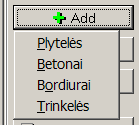- Free to use. I can live with adverts, and some sane restrictions on my free account. But it should be free and remain free. I am not a heavy online storage user, and I don't want one day to come and find out that my account and data are gone because I missed the payment.
- Plenty of storage. Well, that's pretty obvious, isn't it? Now, when several GB account is not a miracle, this was the main reason why I dumped Microsoft's Live Drive, providing only 500MB per user.
- Web access. Almost everyone has it. Who hasn't, out of game for me.
- Security. These days, it is a must. That's why I look down upon services that use HTTP and FTP (otherwise excellent drivehq goes here). Also, this is the reason I don't look at such things as rapidshare. I just need another kind of service.
- Protocol support. Web access is fine... as a last resort. However, for a day-to-day life, I'd like my online storage to be mapped and conveniently accessible with my favorite file manager. And I use both windows and Linux machines. Solution - to support standard protocols, such as FTP/SFTP/FTPS/WebDAV/..., or at least provide some proprietary way to accomplish this task (but proprietary solutions usually support Windows only, as for xdrive).
- Other bells and whistles. Lots of stuff goes here. It is user experience, direct web download, sending file my mail, direct links to files, and so on.
- The name of the game. While mydatabus brings some associations with file storage, humyo associates with noting. Absolutely nothing. But this is the matter to get used to, I believe (like google).
- Storage, filesize and bandwidth. This was the thing that caught my attention. While mydatabus gives its users 5GB of storage, 250MB max file size and 1GB/day bandwidth for shared files, the parameters for humyo are unlimited, unlimited, unlimited, in respective order. To be honest, traffic of 1GB/day is something I'd probably never reach in the foreseen future, and I didn't fill up my 5GB yet (but it is just a matter of time). But the 250MB restriction annoys me from time to time (not often, though).
- Business model. To put it in another words, is this service going to stay the same in the foreseen future, or it may disappear tomorrow? While I can't say for sure, at least I understand mydatabus. They have ads, they have premium accounts. They use Amazon S3 for storage, it is cheap and going to stay for long. I see things going on there, new features are added, technical support is operating. Also, I see more and more restrictions appearing on free account. However, humyo is a dark horse here. They say about some unlimited storage, but I'm afraid to believe such thing from a company nobody knows. They say about selling some premium accounts... hm, maybe, but with all the unlimited stuff they offer, why should many people need one? They don't even have ads...
- Web interface. Both are pretty good, both are heavy javascripted. Mydatabus has more bells and whistles (which I don't use, to be honest), but humyo works faster on opera (my observation). One thing that annoys me on humyo - it is difficult to see long file names, especially.if.they.don't.contain.spaces. Hint windows as in mydatabus could be superb.
- Security. humyo is a winner here, whith its full https support. mydatabus supports https for login page only. Still better than nothing...
- File access. In mydatabus, if my file is not shared, only I (and mydatabus) has access to it. In humyo, I was pretty sure about the same, until I tried to search for some file and found files that I didn't have. I wonder, if others can do the same thing on all my files? That would be VERY bad. Also, in mydatabus I have a place where I can see all my shared files, and manage them. I'd like to have something like that in humyo VERY MUCH.
- Protocol support. Both suck here. Both promise to have something. While support in mydatabus told me about their consideration for some open standards, humyo says something about a proprietary solution for windows only. That would be a minus, on my opinion.
- File upload. humyo is a winner here, by all means. The absence of restrictions and file drag and drop support in java version just rock. Some things I've noticed:
1. ETA could be shown in upload window of java applet
2. When uploading files, is it via http or via https? I want my security!!! (it is https in mydatabase/s3, by the way)
3. When java is uanavailable, there could still be support for uploading several files at once, not only one. - Direct links. Both have it in one way or another. Both have it rather difficult.
- Other stuff. Both have direct web upload. mydatabus has file e-mail feature, and humyo does not. That is the one that I use. The upload/download/connection speeds are fine in both, didn't measured them up.



